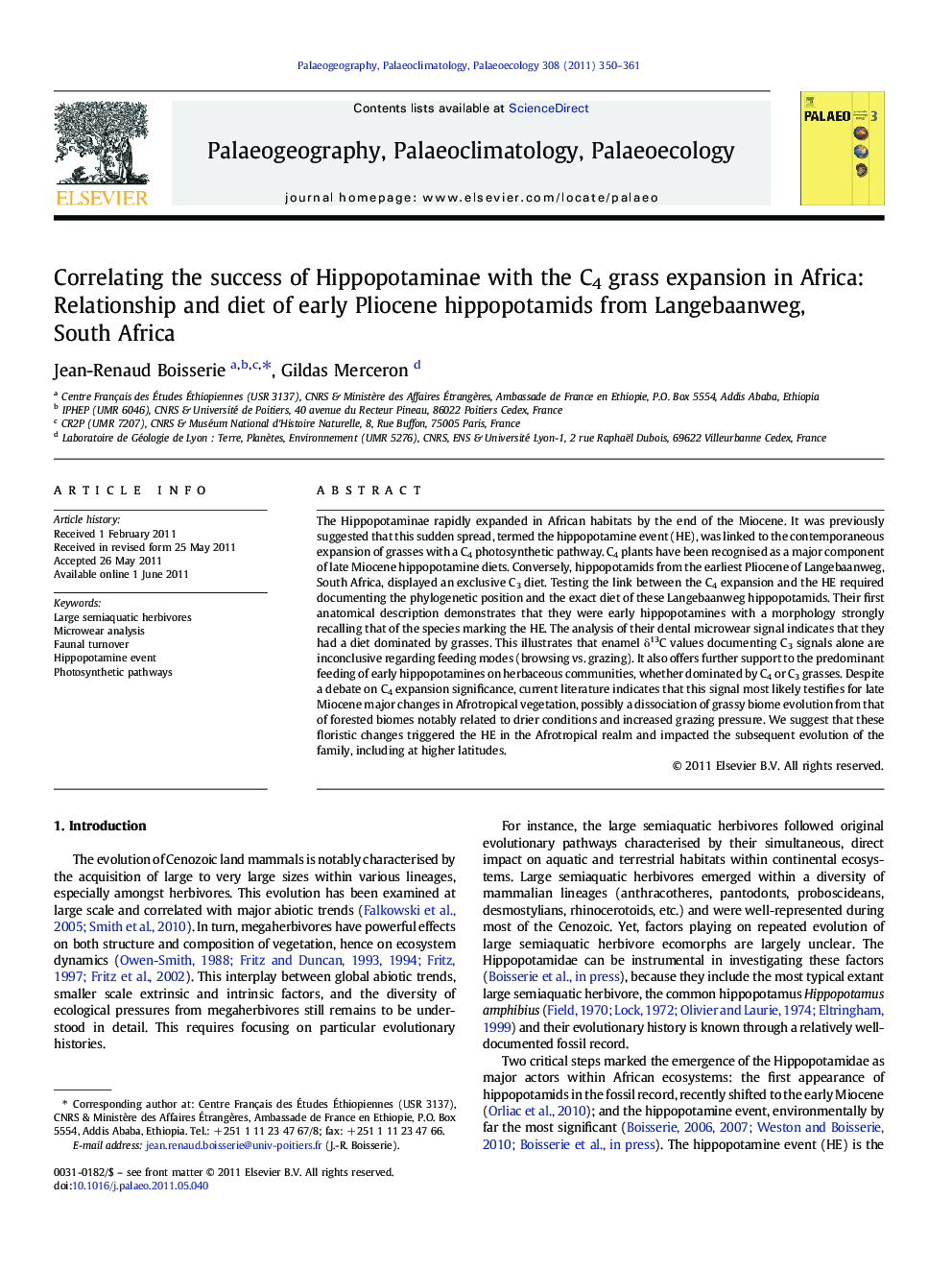| Article ID | Journal | Published Year | Pages | File Type |
|---|---|---|---|---|
| 4467130 | Palaeogeography, Palaeoclimatology, Palaeoecology | 2011 | 12 Pages |
The Hippopotaminae rapidly expanded in African habitats by the end of the Miocene. It was previously suggested that this sudden spread, termed the hippopotamine event (HE), was linked to the contemporaneous expansion of grasses with a C4 photosynthetic pathway. C4 plants have been recognised as a major component of late Miocene hippopotamine diets. Conversely, hippopotamids from the earliest Pliocene of Langebaanweg, South Africa, displayed an exclusive C3 diet. Testing the link between the C4 expansion and the HE required documenting the phylogenetic position and the exact diet of these Langebaanweg hippopotamids. Their first anatomical description demonstrates that they were early hippopotamines with a morphology strongly recalling that of the species marking the HE. The analysis of their dental microwear signal indicates that they had a diet dominated by grasses. This illustrates that enamel δ13C values documenting C3 signals alone are inconclusive regarding feeding modes (browsing vs. grazing). It also offers further support to the predominant feeding of early hippopotamines on herbaceous communities, whether dominated by C4 or C3 grasses. Despite a debate on C4 expansion significance, current literature indicates that this signal most likely testifies for late Miocene major changes in Afrotropical vegetation, possibly a dissociation of grassy biome evolution from that of forested biomes notably related to drier conditions and increased grazing pressure. We suggest that these floristic changes triggered the HE in the Afrotropical realm and impacted the subsequent evolution of the family, including at higher latitudes.
► First description of basal Pliocene hippopotamids from Langebaanweg, South Africa. ► Langebaanweg species related to species marking late Miocene expansion of the family. ► Langebaanweg species principally fed on grasses, as most late Miocene relatives. ► C4 signals mark end Miocene vegetation changes probably favouring hippo expansion. ► Main steps of hippopotamid evolution correlating with Neogene C4 grass spread.
